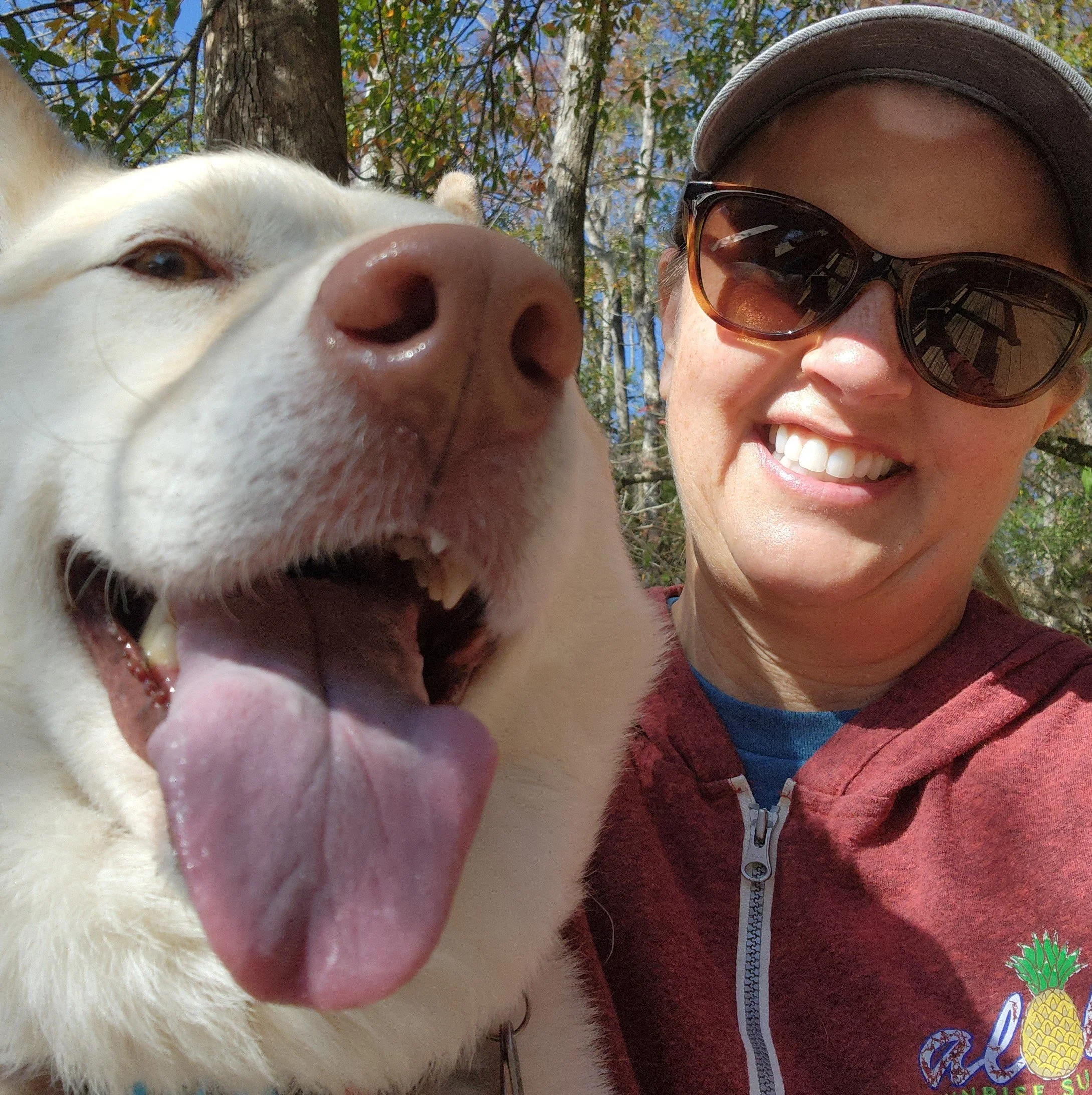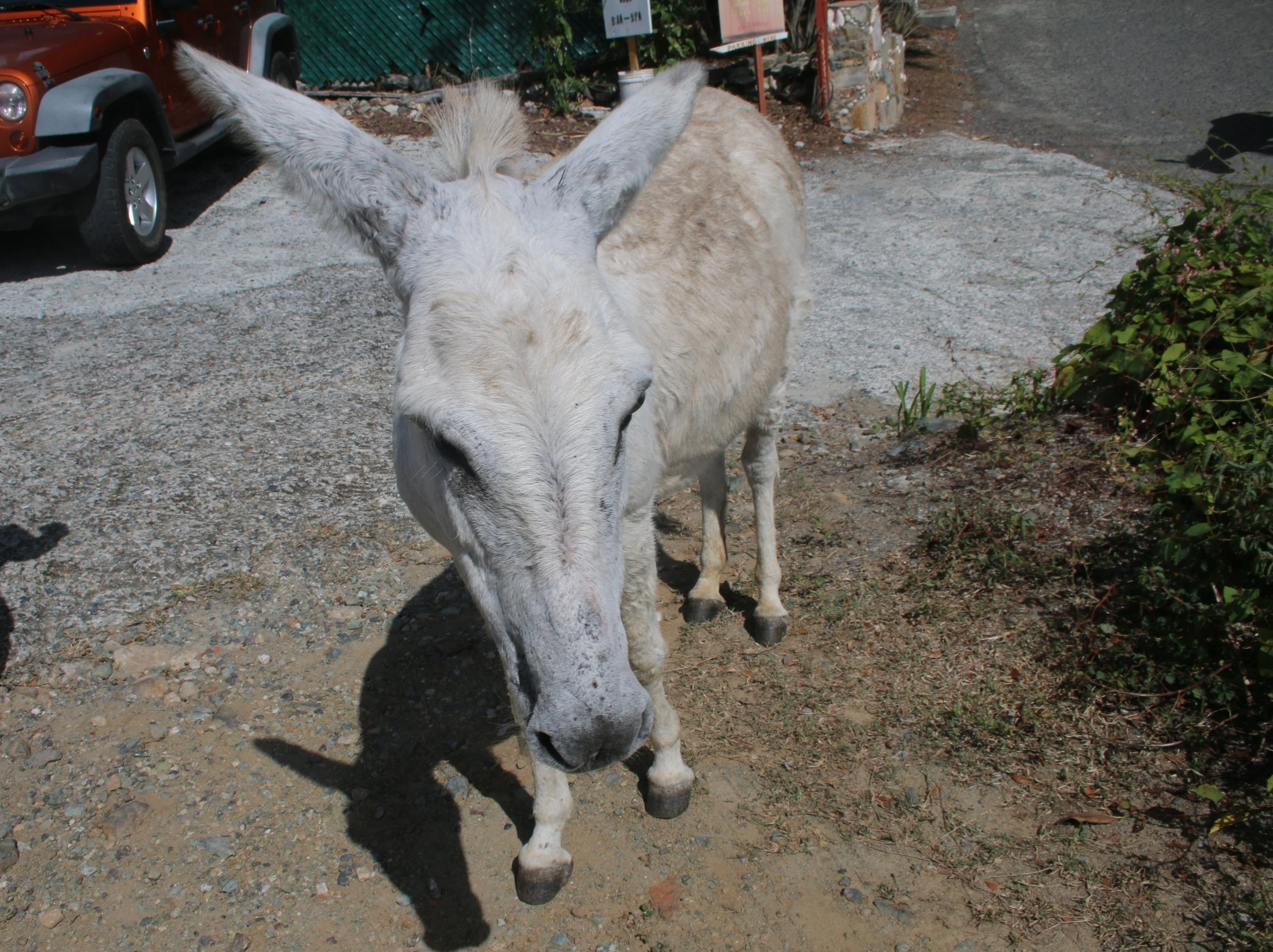Santorini Animal Welfare Association provides sanctuary for the island's iconic equines
SAWAland Part 2
Santorini Animal Welfare Association was founded in 1992 by Greek islanders who called themselves “dedicated animal lovers.” Locally known as SAWA, the organization is run like many animal shelters around the world. They take in sick, injured, and abandoned animals, nurse them back to health, provide a bit of training, and give them a new lease on life through rehoming and adoption. However, SAWA, which recently moved to a new location called SAWAland, helps a special group of animals that are uniquely part of Santorini: Equines.
A view of SAWAlands’ dog kennels from the mule area. Photo by Carrie Dow.
Much like the Colosseum cats of Rome, the Parque de la Gatos in Old San Juan, and the temple dogs in Kathmandu, dogs and cats have always been a part of Santorini’s history and although most are allowed to roam freely, many have families and/or shop owners who care for them, providing food and shelter. What sets Santorini apart from other tourist places is the use of donkeys and mules for carrying goods and people up and down the steep steps of the port cities of Fira, Oia, and Imerovigli. To understand fully Santorini’s equines requires some backstory.
Santorini, originally called Thira, has been occupied by humans for almost 5,000 years. The archeological site of Akrotiri not far from SAWAland, gives visitors a glimpse into this distant past when Santorini was whole – a large, round island with a volcano at its center. Roughly 4,000 years ago, the volcano erupted in one of the most cataclysmic natural disasters in human history. The eruption blew the island into pieces and caused a tsunami that almost wiped out the Minoan civilization on the nearby island of Crete. The eruption was so devastating that it may have inspired Plato when he wrote his epic allegory about the lost city of Atlantis.
The eruption caused parts of the island to collapse underwater forming the steep, crescent-shaped caldera that cruise ships sail into today. Over the centuries, people carved cave houses into these cliffs and built ports at the bottom some 800 feet below for delivery goods and supplies. To serve the islanders, donkeys and mules were brought in because their strong backs could handle the loads and their smaller, nimbler size could handle the steps. After another devastating earthquake in 1956 destroyed the homes and killed 100 people, people began moving away and it was believed the donkeys outnumbered people. The donkeys have been working on the island ever since.
***
SAWA Director Christina Kaloudi showed us around SAWAlands’ mule kennels. Photo by Carrie Dow.
At SAWAland we met with Christina Kaloudi, SAWA’s director and fierce protector. She took on the role 15 years ago devoting her life to taking care of the desperate animals who arrive at SAWAland’s gate. I first came across Kaloudi in 2013 when I started this blog and was looking for shelters to profile. We’ve corresponded several times over the years, but this was our first in-person meeting. She was younger than I expected and extremely tan from working outside every day. She had a puka shell necklace and wore ripped, faded jean shorts and a tank top, showing off biceps I’ve only seen on rock climbers. She got them not from climbing the cliffs of Fira, but by carrying giant bags of animal feed and digging fenceposts for kennels. On her leg was a large tattoo of a dog behind a chain-link fence with the words ‘Animal Liberation’ under it.
When I first contacted Kaloudi in 2013, the shelter was near the airport and served mostly dogs and cats. It was originally thought that establishing a shelter near the airport meant the dogs living there could bark all they wanted, and the planes’ engines would drown them out. When Kaloudi came on board, there was a change in mission to not only help dogs and cats, but the island’s donkeys and mules as well. That meant building equine stables that Kaloudi called a donkey retirement home, a place where donkeys too old to climb the steps of Fira could live out their remaining years in peace.
For some reason the mayor of the airport’s town of Karterados either didn’t like animals, didn’t like Kaloudi or both and told the shelter in 2016 to vacate the public land they were on. Kaloudi admitted that her passion for animals causes her to be demanding and blunt, personality traits that can rub people, like self-serving politicians, the wrong way, but she never stopped her mission.
The ensuing years brought many ups and downs, along with some false starts and dashed plans, but in 2021, Kaloudi and a loyal group of Santorini supporters and European partners, including the generous donation of private land by a European couple, were finally able to build SAWA a new home. Kaloudi and her Canadian husband Dave Small and a small army of volunteers began building structures immediately and moved the final group of animals, including a huge farm pig, onto the property that September. Together the group carved out a visitor’s center and restroom inside a rock mesa at SAWAland’s entrance, and unloaded giant storage containers that were converted into a medical office, volunteer quarters, a kitchen, and a shelter office. Kaloudi said they have plans to build several more structures including more horse stables and a dog kennel just for puppies and young dogs. There’s a lot of work still left to do.
When we met Kaloudi, she was talking to a British couple outside the donkey pen high on a mesa above the dog kennels. She explained the history of donkeys on Santorini and offered some observations. A hundred years ago, she said, most island families had at least one donkey and that animal was considered part of the family.
A few of the mules in the care of SAWAland on Santorini. Photo by Carrie Dow.
“The island exists because of them,” she stated. “In the old days, each family could afford only one donkey, but the donkey had a stable; it had food; it had a name. It was their vehicle, their tractor. It put the bread on the table. It had a better life.”
As the first wave of tourists began arriving in the late 1970s, the only way to get them and their luggage to Fira was by mule. As more and more people “discovered” the island, the practice of riding a mule up the steps turned into a travel ritual and hundreds, then thousands, of people did it every season. For the families who owned the mules, it was originally a side business, a way to make extra money. When cruise ships began arriving in the 2000s, people realized they could make their entire living giving people mule rides up the steps. People, both locals and tourists, quickly forgot these animals were not entertainment and photo ops, but living creatures with limits. The animals began to suffer.
As often happens when animals are used for profit, abuse became rampant. Mules were forced to carry heavy people and luggage up and down the steps for hours on end during the heat of the day with little food or water because the more people they carried, the more money they made. As they worked, the steps would become dangerously slippery from the mules’ urine and excrement. As we humans got bigger and more obese, the people themselves became too heavy for the donkeys to carry causing deformities in their spines, necks, and legs.
According to a 2019 history article in The Greek Reporter, in the early 1980s a cable car was built, paid for a by a wealthy businessman who wanted to speed up the arriving tourists, not to help the mules. However, the project became contentious, and the mule families put up a fight. Eventually, an agreement was made that allowed the families to get a percentage of the cable car profits while continuing the practice, but under strict rules. Many people thought mule riding would go away because of the convenience of the cable car. However, the romantic ideal tourists had of riding the mules up the steps was already entrenched and continued to be popular and local police never enforced the new rules. Another issue was that as the number of visitors increased, the cable car’s capacity – about 1,200 people an hour (600 up/600 down) – was quickly eclipsed and long lines and wait times of up to four hours often resulted which made the donkeys an attractive option.
Mules being led back to their stables after a day of work in Fira. Photo by Carrie Dow.
The abuse and neglect of the Fira mules continued and in the 2010s several accidents involving tourists, including the death of a German woman, made international headlines. Kaloudi said that as a result, cruise ships no longer endorse riding the mules at Fira’s port.
“I think it’s going to die off, the part with the cruise ships,” she said. “The tourists coming up the steps, it’s going to die off in our lifetime … because the shipping companies give clear messages that it’s not only animal abuse, it’s a [liability] for them. You have other ways to get up. You have the cable car. Most of them take buses because they go on excursions.”
Even if tourists stop riding mules, the life of the island’s pack animals is still difficult. Kaloudi says that mules are still used to haul heavy construction materials throughout the island. And in the narrow streets of Fira and Oia, mules are the only way to haul in supplies for shops and restaurants and haul out trash.
“The real problem is the building,” she continued. “Nobody sees them building. The building is whatever you see on the caldera from one side of the island to the other. Everything has been built on their backs. Everything has been brought down and everything will be built on their backs. There is no access to any vehicle. All the restaurants, the hotels, the pubs, the shops you see. Everything at night when everyone is passed out from drinking or sleeping is cleaned from there.” She says that instead of making more than one trip up or down, people will put as much as possible on the mules to make only one trip, an unbearable weight.
SAWAland is home to a donkey sanctuary that cares for the island’s unwanted and elderly mules. Photo by Carrie Dow.
“This is all at night, so nobody sees that. And the building (construction) is usually off season, so nobody sees that. They need to find another way. They can still make a rail to move the garbage.”
Kaloudi then introduces us to some of the donkeys in SAWAland’s care. Several, like Bibi, were surrendered to SAWA when they could no longer work. Often, they are left tied up at the gate overnight, the person who put them there unknown. Kaloudi says that almost all her donkeys and mules have some sort of back injury. As we move around the stable, Bibi follows us around and when we’re not looking, she puts her head under our hands, wanting us to pet her. We dutifully oblige.
As we talk, Kaloudi pointed out the new horse stables she and her husband built between the dog kennels and mule area. Kaloudi says she now has a new fight on the island, horse trail rides. Riding a horse on the beaches of Santorini has become a popular tourist excursion and the number of horses being brought to the island has increased dramatically.
But like the donkeys all those years ago, the practice is unregulated. Horses are left outside in the hot sun all day and given the bare minimum of food and water. Kaloudi pointed out that horses are not native to Santorini and that walking on rocky ground on steep terrain in the blazing sun is not good for their wellbeing.
A group of horse riders on the beach in Santorini. Photo by Carrie Dow.
“I’m not saying no to horse riding. Horse riding in a proper place in proper weather conditions and you know where the horses are being kept… Why are these 70 horses standing in the sun?”
She’s also frustrated by the attitude of the horse-riding companies. She claimed that retired racehorses from Athens are bought on the cheap and sent to Santorini where they only work a season or two, often to death.
“They don’t care… [They] bought it for 150 or 200 Euro and he goes on three trips a day, he’s more than made the money… The horse makes 130 to 150 Euro just to go to the beach. It doesn’t matter if they’re taken care of or not because they will just replace them.”
Kaloudi was distraught by this new situation because the shelter wasn’t designed to handle such big animals or so many of them. She said they don’t have the proper medical care for horses adding that Santorini does not even have a farrier to care for their hooves. She takes in as many as she can (she and Dave are in the process of converting more land for horses so she can house more) but spends much of her time relocating or rehoming them to more suitable places in mainland Europe like Poland, Spain, and England.
When we had walked the shelter dogs on the beach earlier in the day, we saw a group of tourists riding horses along the beach. This was around 10 in the morning and the October air was already hot. I imagine August is even hotter. I wondered if the riders on those horses knew they were close to a horse sanctuary. If they had seen SAWA’s horses, would they have made a different choice?
***
Author’s Disclaimer: In the short time I was there, I could not independently verify Kaloudi’s claims of horse abuse, but having experience with horse riding excursions, abuse and neglect can happen. No one starts a riding operation with the intent of hurting animals, but when profit is involved, neglect can result because bottom-line decisions come before the animals’ welfare – actions like buying less feed, not paying for heat or air conditioning, or delaying or avoiding medical care. Often people get into the horse-riding business because horses are cute and/or they see dollar signs and don’t realize what hard work it is to care for one horse, let alone 20. And some people are abusive; Kaloudi showed us the victims. If you go to Santorini and want to ride horses, DO YOUR HOMEWORK. Check reviews, ask others with direct experience for recommendations, find out how long the outfitter has been in business or how many horses they have in their care. ASK QUESTIONS. What do the animals eat and where do they sleep at night? What happens to the horses when they can no longer work? An outfitter who can’t give a direct answer should be avoided. Check Google images for photos or view the site on Google Maps. Is there shelter? How many horses do you see? And if there’s anything that gives you pause, don’t do it. Find something else to do, like walking SAWAland’s dogs to the most beautiful beach on the island.
A donkey walking the steps in the port city of Oia. Photo by Carrie Dow.













